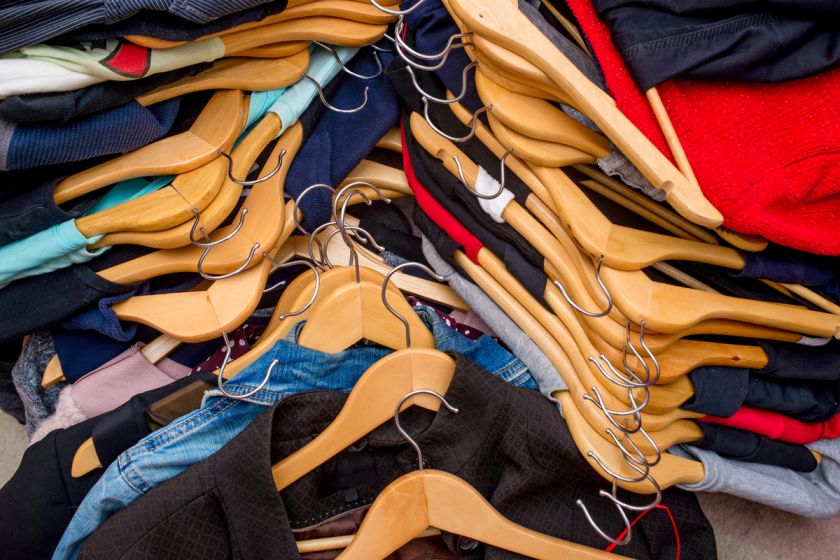When It Benefits And When It Damages A Brand To Be Out Of Stock



When a customer looks for a particular item that is not available for them, the item is said to have been facing a stockout, or in simple terms, it is out of stock. A brand is said to have been facing a stockout when the brand cannot fulfill its demand because its inventory has been exhausted.
This situation can hurt a brand’s image and its sales. For instance, if the clothing stock of a leading cloth manufacturer falls, it will hurt the customer, and they will be forced to choose another platform to buy the product. It is crucial to understand the factors that may give rise to such a situation.
How Does A Brand End Up Being Out Of Stock
There are several reasons why a particular brand ends up being out of stock. Some of the reasons are as follows -
- Brands may lose all of their clothing stock due to a shortage of working capital, which may arise due to a poor cash flow in the company. A low cash flow means a low purchase of goods.
- An unprecedented rise in purchases may also result in a shortage of items in the inventory.
- Sometimes, the inventory manager may unknowingly mess up the number of items in the inventory resulting in a miscalculation that eventually leads to an item being out of stock.
- Furthermore, there can be some faults in the demand forecasting of the company due to the inability to process the data of sales, promotions in a correct manner.
- This situation can also arise due to improper handling of stocks of items and inaccuracy in placing replenishment orders.
When It Harms Brands To Be Out Of Stock

Kelly Goldsmith is an expert on scarcity marketing, a technique used by many brands to gain popularity or increase the hype about their product. She says that it is very bad to be out of stock in a world where e-commerce platforms are growing rapidly. Furthermore, she points out that these marketing techniques can only work on experiential purchases but cannot function as durable goods. Therefore, if a brand’s clothing stock falls sharply, it will drastically impact its business.
Mark Ryski backs her up by stating that “Out of stock is more dangerous in the times we live in now — specifically, the rise in the secondhand market and firms like The RealReal, Poshmark, and Thredup. They offer luxury, with proof of authenticity, delivered online”. While an expert on optimizing e-commerce using market intelligence, Rajat Nigam, cites that “You lose up to 42 percent of your sales when you’re out of stock online. It takes four to five days to regain your full sales after one day out of stock.”
Nigam also points out that several websites that run on digital shelves, where there are multi-brand retailers, base their business on the number of buyers adding items on the cart. However, if they are out of stock, it disheartens buyers when they find their favorite items are unavailable. It takes a lot to rebuild that trust in the buyers, to assure them that the next time they visit that shop, items will be in stock.
When It Benefits Brands To Be Out Of Stock

Nigam also believes that being out of stock can benefit some businesses. However, to make the most out of this crisis, brands should announce that they're out of stock, giving customers a final chance to get their hands over their favorite product.
Many e-commerce websites have been using this in the form of end-of-the-season sales, lightning deals, and whatnot. This creates a scenario where consumers are presented with a time limit and a fixed number of items. Moreover, the items are offered at high discounts. Studies have shown that this engineered scarcity can drive sales upwards by thirty percent from normal days.
Kelly Goldsmith warns that these techniques will only work with luxury products. So brands do not need to see these techniques as revenue generators; rather, they're a means to build their brand. An expert of marketing professor Thomas Gruen points out that brands need to analyze their sales report and shopper’s search history to determine which items can be used for scarcity marketing. These data will help brands maintain adequate stock levels.
Mark Ryski, a renowned consultant, said that brands could benefit greatly by projecting an image that their items are few and that a particular item is exclusively for the buyer. This makes customers happy, as such marketing techniques are meant to make them feel special. Furthermore, stores can use the same technique on the next customer that walks through their door.
These were some of the key benefits that any brand can get by declaring that their stock, such as clothing stock, is ending, and customers need to hurry to get hold of it.
How Can Brands Save Themselves From Being Out Of Stock
Brands can take several measures to keep their inventories replenished. Some of these measures are as follows:
- Brands can regularly check their inventory using a mobile application, whose data needs to be updated frequently.
- RFID technology can be employed to track a particular item, ensuring that brands can replenish it whenever it runs out of stock.
- By making the supply chain more efficient, such situations can be averted successfully.
- Delivery cycles need to be adjusted to meet the rising demands of the customers.
Being in stock is both boon and bane for brands, depending on the products they offer to their customers. Therefore, brands need to understand their products' demands and competitions before attempting something, like scarcity marketing.
Are you a cloth manufacturer who often finds your clothing stock scarce? Fashinza offers services to replenish your stocks by helping you source clothes.



















